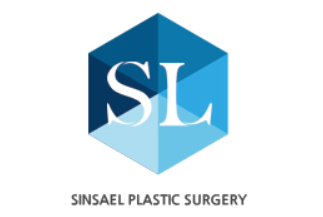Ptosis Correction in Korea, Seoul, Gangnam
SINSA L Plastic Surgery
Eye-Specialized Care & Cost Guide
At a Glance
- Problem: True eyelid droop (ptosis)—the lid margin sits too low over the pupil, causing a sleepy or obstructed look
- Fixes: Levator advancement/resection, MMCR (Müller’s muscle–conjunctival resection), frontalis sling (severe/congenital)
- Often combined with: Upper blepharoplasty (skin/crease refinement) and, when appropriate, brow support
- Goal: Brighter eyes and restored visual field with a natural, stable crease
- Fly-in stay: Typically 7–10 days in Seoul for stitch removal & early checks
Why Korea — and Why an Eye-Specialized Clinic?
1) High-volume, measurement-led care
Korean periorbital surgeons regularly manage functional ptosis and complex revisions. Planning uses MRD1, levator function, phenylephrine test (for MMCR), and Hering’s law assessment to prevent surprise asymmetry.
2) Structure-preserving, natural results
The lid is lifted by repairing the muscle/tendon (not just removing skin). Crease height is set conservatively to avoid a startled look; skin/fat tailoring is minimal and fat-preserving.
3) Whole-unit design (brow–lid–crease)
Specialized teams evaluate brow descent, dermatochalasis, and inner/outer corners so your lift opens the eye without changing your expression.
4) Traveler-friendly workflow
Clear English consults, photo reviews, printed aftercare, and itinerary-aware scheduling (stitch-out ~day 5–7).
5) Strong value
Surgeon-led procedures, hospital-grade protocols, meticulous closure—at competitive pricing compared with many global hubs.
Ptosis vs. “Hooded Lids” (Skin Only)
- Ptosis: The lid margin is low; you may lift your brows to see. Needs levator/MMCR/sling.
- Dermatochalasis (hooded skin): Extra skin covers the crease but lid height is normal. Needs upper blepharoplasty.
Many patients benefit from a combo: ptosis repair for opening + upper bleph for neat skin/crease.
Techniques (Customized to You)
- Levator Advancement/Resection – Tightens or advances the levator aponeurosis (gold standard for adult aponeurotic ptosis).
- MMCR – Posterior approach for mild–moderate ptosis with good phenylephrine response and decent levator function.
- Frontalis Sling – Connects lid to brow for severe or congenital ptosis with poor levator function.
- Adjuncts – Upper blepharoplasty (skin/crease refinement), brow support if lateral hooding contributes; epicanthoplasty when inner-corner coverage hides the result.
Who Is a Good Candidate?
- “Sleepy eyes,” low lid margin, makeup prints on upper lid/lashes
- Brow fatigue or headaches from brow-lifting to see
- Asymmetric eyelid height (one eye more droopy)
- Realistic goals and willingness to follow aftercare
Cost Estimates (Guide)
Final fees depend on anatomy, levator function, test response, and whether you combine skin/brow work or revision. Ranges typically include surgeon + facility + anesthesia (KRW).
- MMCR (mild–moderate ptosis): ₩1.8M–₩3.2M
- Levator Advancement/Resection: ₩2.5M–₩4.8M
- Frontalis Sling (severe/congenital): ₩3.5M–₩6.5M
- Upper Bleph (add-on for skin/crease): ₩1.8M–₩4.0M
- Revision Ptosis Repair: ₩3.5M–₩7.0M
Example Scenarios
- A. Mild ptosis, good levator, positive phenylephrine: MMCR → ₩1.8M–₩3.2M
- B. Aponeurotic ptosis with hooded skin: Levator advancement + upper bleph → ₩3.8M–₩7.8M total
- C. Severe/congenital (poor levator): Frontalis sling → ₩3.5M–₩6.5M (± later crease refinement)
- D. Asymmetry with compensatory brow use: Bilateral tailored repair (small lift on “good” side) → quote after measurements
Travel Timeline (Typical)
- Day 0: Outpatient surgery (60–120 min)
- Days 1–3: Peak swelling/tightness; head elevated; cool compresses
- Day 5–7: Stitch removal (if external)
- Day 7–10: Socially presentable; light makeup after clearance
- Weeks 3–6: Crease and height refine; swelling fades
- Months 3–6: Final symmetry and scar maturation
How to Get Your Personal Estimate (Fast)
Send (email or form upload):
- Photos: front/45°/side eyes open & gently closed, brows relaxed (and an extra photo lifting brows—to show compensation)
- Prior eyelid procedures or contacts/dry-eye history
- Top priorities: opening, crease shape/height, asymmetry
- Travel window and downtime preference
You’ll receive a provisional plan (MMCR vs levator vs sling ± upper bleph), a fee range, and a travel-aware aftercare calendar.
FAQs
Will I look natural?
Yes—crease height and lift amount are
conservative and matched to your features. Aim: refreshed, not surprised.
Do both eyes need surgery?
Often yes, due to
Hering’s law (brow/lid coupling). Small adjustments on the “better” side can improve symmetry.
Can this fix vision obstruction?
Functional ptosis repair lifts the lid margin and can
improve the visual field; documentation available when indicated.
What are the risks?
Swelling/bruising, dryness, temporary asymmetry, over/under-correction, crease irregularity, visible scarring (incision cases), rare exposure symptoms. Risk-reduction is individualized.
I have thyroid or neuro issues—can I proceed?
Stable/systemic conditions may be candidates; active disease needs coordination with your medical team.

